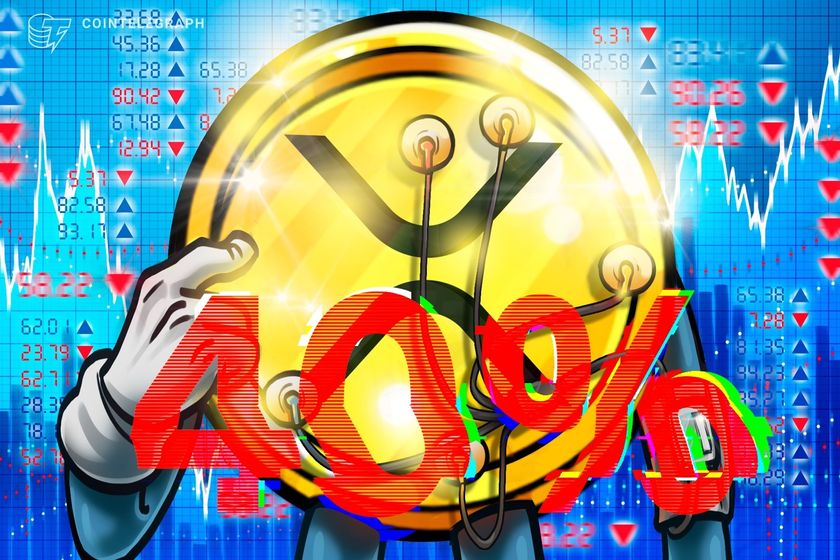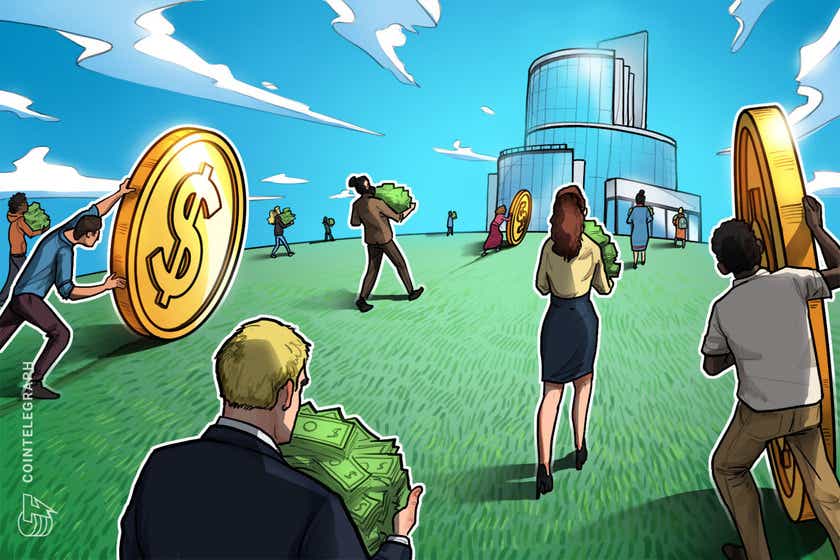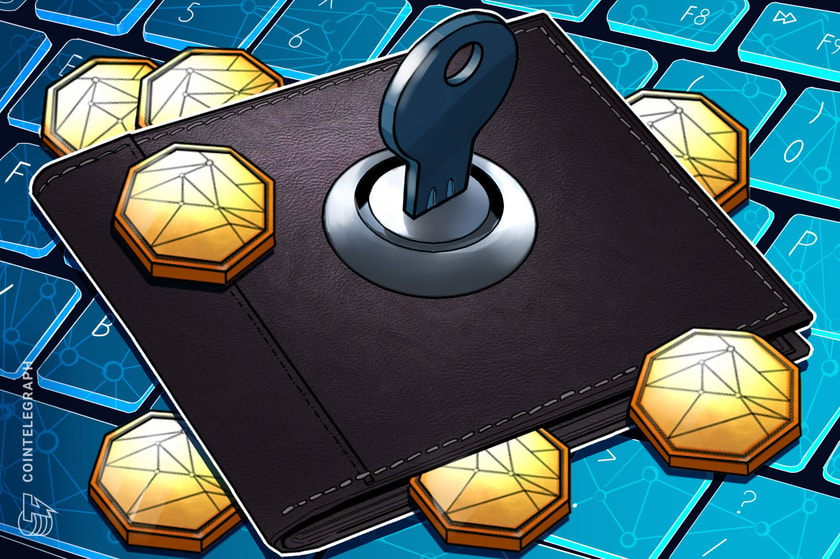Blockchain tech offers multiple paths to financial inclusion for unbanked
Financial inclusion, accessible services and the unbanked are standard talking points in many conversations about crypto. But, the details may remain somewhat fuzzy — the people who talk about crypto are generally those already inside the financial system. There are people who are actively working to increase financial inclusion and access to services for the vast number of people who are unbanked or underserved.
CBDC for the people
Central bank digital currencies (CBDC) will serve different purposes in different places. In economies where individuals have moved away from high levels of cash usage, like those of the United States and the United Kingdom, there will be relatively little retail demand for CBDC, but there are places where cash is in short supply and CBDC can serve to increase basic opportunities for prosperity and economic growth.
nChain works with central banks to facilitate the use of CBDC through its Digital Cash product. nChain director of commercial and strategy, Simit Naik — who has experience working in West Africa — told Cointelegraph that CBDCs in that region should “ensure continued access to an inclusive and stable form of central bank money for citizens, when physical cash usage is declining.”
Having access only to physical cash limits people to the most basic forms of transaction. A CBDC would provide entry into the digital economy and introduce new business models by supporting micro- and nano-payments. Access to broadband to participate in the digital economy would be rare, but mobile phone penetration and connectivity are “far greater” than one might expect, Naik assured. According to the GMSA — a mobile communications association — there were 5.3 billion unique mobile subscribers in the world as of the second quarter of 2022.
A CBDC can save central banks money and time by providing real-time access to data to inform monetary policy. A typical implementation of the nChain Digital Cash product would be for the central bank to dedicate a portion of its reserves as collateral for digital cash. Then, nChain would support the central bank as it minted and distributed digital cash tokens on a one-to-one basis with the collateralized reserve money. It is important that the CBDC be non-intermediated, as it may be used in places where no financial infrastructure exists.
Civil servants’ salaries would be paid in CBDC as a first step, then it would be distributed to merchants. The central bank could also use it to make payments, such as welfare and stimulus-related payments, directly to the public.
Related: Here’s what’s happening in Web3 across Africa
Like Digital Cash, the purpose of nChain’s Digital Money solution is to provide access to financial services to people who traditionally have not had access to those services. The Digital Money product is account-based, however, allowing it to model more traditional forms of money. Commercial banks and fintechs can use it to introduce new financial products. It can be used for microlending and for tokenization of assets and commodities, which allows people to become investors, as brokerage services are regulated but do not necessarily require a broker.
The advantages of a credit rating
Another approach to expanding access to financial services is to create visibility for the billions of people who lack credit scores. According to Brendan Playford, founder of Pngme and Masa Finance, 1.5 billion people worldwide have credit scores, and 3.3 billion people are “credit invisible.” That means that they are creditworthy, but their credit history is not associated with them in the traditional banking system. An accessible credit score is a prerequisite for many financial services, especially credit, and it may impact identity verification and access to insurance.
Targeting the one billion people, mobile money economy and processing the data from peer-to-peer micropayments made through established providers can enable the scoring of previously credit invisible people. In Africa, only 20–30% of the population has a credit score. Pngme has partnered with TransUnion credit scoring service to use mobile money data to raise that level to 60–70%. According to GSMA, mobile money transactions in Sub-Saharan Africa were worth $697.7 billion, out of a world total of $1 trillion, in 2021.
Banks in Africa “struggle to serve underserved markets, so Pngme is privately providing infrastructure for an end user to create a credit score where they otherwise wouldn’t be able to do it,” Playford said.
Data captured by Pngme is one of the data sources used to drive on-chain lending through Masa Finance. Masa Finance is a decentralized credit protocol that connects off-chain credit data to decentralized finance (DeFi), creating a “soulbound” credit profile nonfungible token (NFT). Masa uses the mobile-friendly and scalable Celo blockchain to lend small sums using anonymized data for underwriting and stablecoins as a settlement currency that can be converted into fiat or cryptocurrency. Playford told Cointelegraph:
“Inclusion is really about choice. If you’re underserved and you need to get financed, you can find it, but your terms are incredibly unfavorable. What this technology does is it makes a fairer ecosystem, where more people can offer products in an open framework.”
Masa Finance recently announced the completion of pre-seed funding and expects a full-scale launch in three to six months. A testnet has been launched and its mobile app is in beta and has about 40,000 users. The app will encompass 10,000 data sources in 78 countries when it starts full operations in the next few weeks.
“The reality is all of the work that I’m doing is disrupting the way in which banks have a monopoly in lending. We are building an ecosystem that serves the top to the bottom of the pyramid,” Playford said.
Accessible banking services
DeFi can combine with traditional banking to offer the best of both, providing services to the unbanked and improving the services available to those who are already inside the system. EQIFi, a decentralized finance platform, is backed by EQIBank, a fully regulated digital bank licensed in Dominica. EQIFi provides a platform for DeFi products while operating with EQUIBank accounts, loans custody, OTC and wealth management. It also offers peer-to-peer transfers and microlending.
“Not everyone needs a loan that requires a credit rating,” EQIFi founder and CEO Brad Yasar told Cointelegraph.
The cost savings associated with decentralized finance enables EQIBank and EQIFi to operate in parts of the world where a large corporate bank would find it prohibitively expensive to do business. Yasar said:
“We wanted to create a platform that brings decentralized finance with traditional finance in a way that opens doors to all people.”
Because of its link to EQIBank, EQIFi is also subject to regulatory requirements and is registered in the British Virgin Islands and Dubai. Yasar is a vocal proponent of regulation and transparency in the crypto space.
EQIFi products also offer financial inclusivity in the form of “the kind of rates and returns which were previously only available to institutional investors and the wealthy elite,” according to promotional material. Yasar described the platform’s yield aggregator as its “crown jewel.”
“Licensed and regulated projects like EQIFi are paving the way for a transition from anonymous high-risk DeFi platforms to safer, more transparent versions,” Yasar told Cointelegraph earlier. “With DeFi, we can offer more products cheaper to a much larger portion of the world population.”









